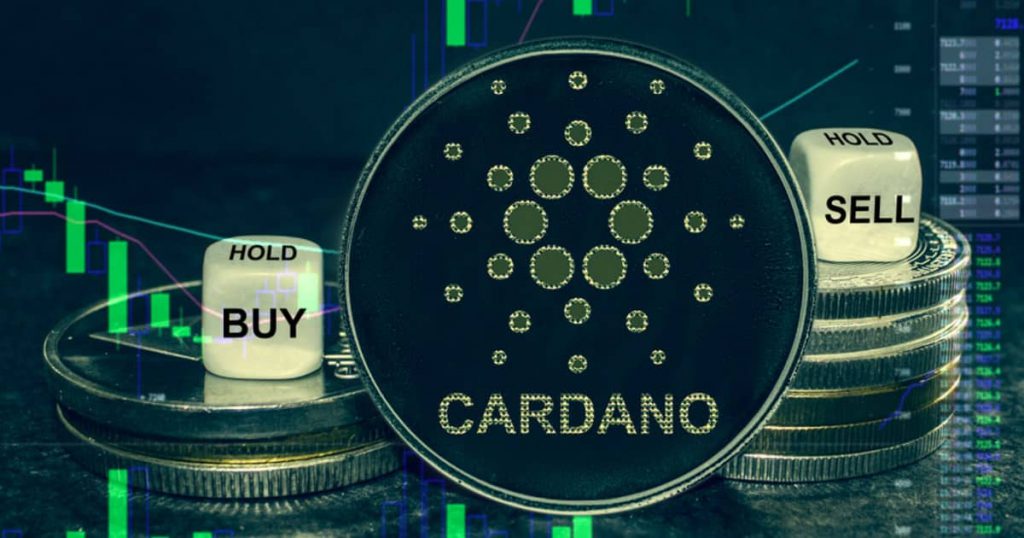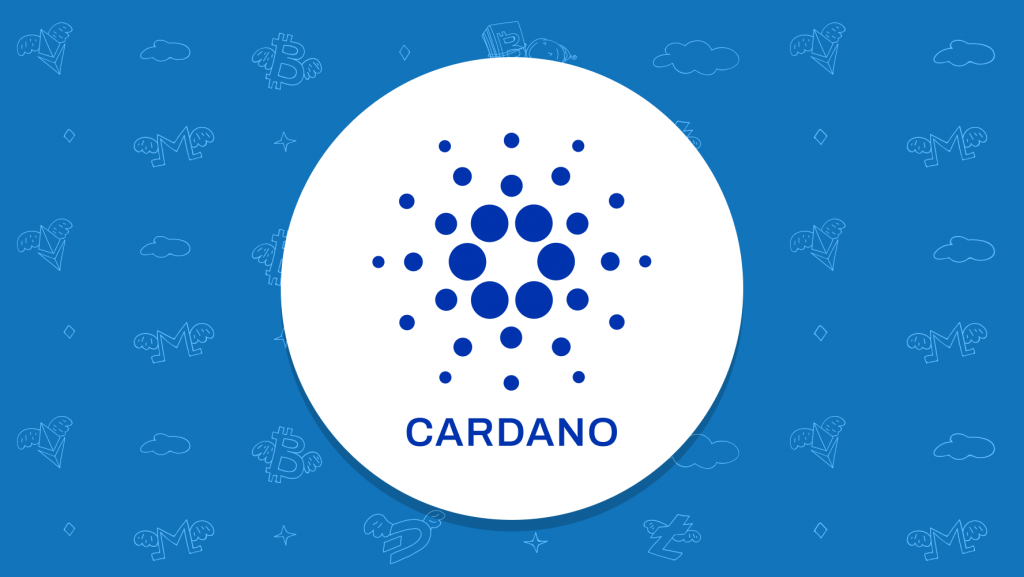How to Bridge to Cardano?

Share:
How to Bridge Assets to Cardano: A Comprehensive Guide to Decentralized Finance
In the rapidly evolving world of blockchain technology, bridging assets between different networks has become increasingly important.
Decentralized finance (DeFi) offers a secure and efficient solution for users looking to transfer their assets to the Cardano blockchain.
In this comprehensive guide, we will explore the step-by-step process of bridging assets to Cardano, the benefits of decentralized finance, and the various platforms that support cross-chain bridging.
Also read: How to Bridge to Mantle?

Introduction to Decentralized Finance and Cardano Blockchain
In recent years, decentralized finance (DeFi) has gained significant traction in the blockchain industry.
DeFi refers to the concept of using smart contracts and blockchain technology to provide financial services without the need for intermediaries.
Cardano, a leading blockchain platform, has emerged as a prominent player in the DeFi space due to its scalability, advanced security features, and robust governance protocol.
Furthermore, Cardano, with its native token ADA, offers a wide range of opportunities for users seeking to leverage decentralized finance.
By bridging assets to the Cardano blockchain, users can tap into the benefits of its advanced features and gain access to a diverse ecosystem of DeFi products and services.
Also read: How to Bridge to Conflux?
Understanding the Bridging Process
Bridging assets involves transferring tokens from one blockchain network to another. Cryptocurrencies are often designed to function on specific chains, but bridges enable liquidity to flow seamlessly across different networks.
In the case of Cardano, bridging assets enable users to transfer tokens from other networks, such as Ethereum, to the Cardano blockchain.
The bridging process is managed by cross-chain bridging platforms that facilitate the secure transfer of assets between networks.
These platforms utilize smart contracts to lock funds in the original network and create equivalent tokens in the destination network.
Additionally, validators oversee the transactions on both chains to ensure the accuracy and security of the token transfer.
Selecting a Wallet: Metamask and Cardano Native Wallets
Before initiating the bridging process, users must select a suitable wallet to store their assets.
Two popular options for bridging assets to Cardano are the Metamask wallet and Cardano’s native wallets, such as Daedalus and Yoroi.
Metamask is a widely used wallet that supports multiple blockchains, including Ethereum.
Additionally, it allows users to manage their Ethereum assets and interact with decentralized applications (DApps). To bridge assets from Ethereum to Cardano, users can connect their Metamask wallet to a cross-chain bridging platform that supports both networks.
Alternatively, Cardano’s native wallets, Daedalus and Yoroi, provide a seamless experience for managing ADA and interacting with the Cardano blockchain.
Users can securely store their ADA tokens and participate in activities like staking and voting within the Cardano ecosystem.
Users can connect their Cardano wallet to a compatible cross-chain bridging platform to bridge assets to Cardano.
Step-by-Step Guide to Bridging Assets to Cardano

Connecting with a Cross-Chain Bridging Platform
To initiate the bridging process, users must connect with a cross-chain bridging platform supporting Cardano.
Two prominent options for bridging assets to Cardano are Celer Bridge and Multichain.
Celer Bridge is a trusted cross-chain exchange that supports transfers to the Cardano Ouroboros chain.
It offers a streamlined process with lower fees and less slippage than traditional bridging options. To begin bridging with Celer Bridge, follow these steps:
- Go to the Celer Bridge website and link your preferred wallet, such as Metamask or Cardano’s native wallet.
- Choose Cardano as the destination blockchain for your tokens.
- Select the token you wish to transfer and specify the amount.
- Review the transaction details and click ‘Swap’ to initiate the bridging process.
Multichain is a multi-chain decentralized exchange (DEX) that supports Cardano and many other blockchains.
It offers a user-friendly interface and facilitates bridging from over 20 different blockchains, including Ethereum, BNB Chain, Polygon, and more. To bridge assets to Cardano using Multichain, follow these steps:
- Navigate to the Multichain website and connect your preferred wallet, such as Metamask.
- Choose Cardano (Milkomeda Mainnet) as the target chain and select the source chain from which you want to send assets.
- Specify the token you want to bridge to Cardano and the amount you wish to transfer.
- Review the transaction details and approve the bridge to initiate the asset transfer.
Choosing the Source and Destination Chains
When bridging assets to Cardano, users must select the source chain from which they want to transfer tokens and the destination chain, Cardano’s Ouroboros chain.
Furthermore, the source chain could be Ethereum, BNB Chain, Polygon, or any other compatible blockchain supported by the bridging platform.
Selecting the Token and Specifying the Amount
After choosing the source and destination chains, users must select the specific token they want to bridge to Cardano.
Depending on the source chain, the token could be any ERC-20 or BEP-20 token. Users should double-check the token’s compatibility with the bridging platform before proceeding.
Once the token is selected, users can specify the amount they wish to transfer to Cardano. It is advisable to start with a small amount for testing purposes before initiating larger transfers.
Reviewing the Transaction Details and Approving the Bridge
Before finalizing the bridging process, users should carefully review the transaction details, including the token, amount, and any associated fees.
It is essential to double-check the wallet address and ensure its accuracy to avoid any loss of funds.
After reviewing the transaction details, users can approve the bridge and initiate the asset transfer. The bridging platform will lock the assets in the source chain and create equivalent tokens on the Cardano blockchain.
Monitoring the Asset Transfer to Your Cardano Wallet
Once the bridging process is initiated, users can monitor the progress of the asset transfer to their Cardano wallet.
The transfer may take some time to complete depending on network congestion and other factors. Users should be patient and refrain from making unnecessary transactions during this period.

Exploring Cross-Chain Bridging Platforms for Cardano
Celer Bridge: A Trusted Option for Asset Transfer
Celer Bridge is a cross-chain exchange that offers a streamlined and cost-effective solution for bridging assets to Cardano. It supports transfers from networks like Ethereum, Polygon, BNB Chain, and many others.
With its lower fees and reduced slippage, Celer Bridge provides a preferred option for users transferring their assets to Cardano.
Multichain: Supporting Cardano and Other Blockchains
Multichain is a multi-chain decentralized exchange (DEX) that supports Cardano and many other blockchains. It offers a user-friendly interface and facilitates bridging from over 20 different blockchains.
Users can bridge assets to Cardano using Multichain and access its advanced features and DeFi services.
Microchain: A Secure Cross-Chain Bridge on Cardano
Microchain is a secure cross-chain bridge built on the Cardano blockchain. It offers fully centralized and decentralized cross-chain services, enabling multi-chain and multi-layer functionality.
Currently, Microchain supports cross-chain interaction between Cardano, Ethereum, Bitcoin, and Milkomeda. With its focus on security and interoperability, Microchain provides a reliable option for bridging assets to Cardano.
Milkomeda: Accessing EVM Features on Cardano
Milkomeda is a protocol that enables non-EVM blockchains to access Ethereum Virtual Machine (EVM) features.
Additionally, it supports the Cardano network and allows users to leverage the power of the Ethereum ecosystem on Cardano.
Furthermore, by bridging assets to Milkomeda, users can access existing smart contracts and DeFi services on Ethereum.
Understanding Bridging Fees and Transaction Costs

When bridging assets to Cardano, users should be aware of the fees associated with the process. The fees primarily include gas costs for transferring tokens across different blockchains.
The fee amount may vary depending on the source chain and the bridging platform.
In addition to the platform fees, users may also need to pay a small gas or transaction fee when sending assets from one chain to another.
Reviewing the fee structure provided by the bridging platform and considering these costs before initiating the bridging process is advisable.
Benefits of Bridging Assets to Cardano
Bridging assets to Cardano offers several benefits for users seeking to leverage decentralized finance and explore the Cardano ecosystem. Some of the key advantages include:
Utilizing Cardano’s Scalability and Security Features
Cardano is renowned for its scalability and advanced security features.
By bridging assets to Cardano, users can use its robust infrastructure and enjoy faster and more cost-effective transactions.
The Cardano blockchain’s Ouroboros consensus protocol ensures secure and reliable transactions, making it an ideal choice for users looking for a secure and scalable blockchain platform.
Accessing Exclusive DeFi Services on Cardano
Cardano’s growing ecosystem offers a wide range of decentralized finance (DeFi) products and services exclusive to the Cardano network. By bridging assets to Cardano, users can access popular DeFi protocols and applications, such as Minswap, Indigo, WingRiders, Djed Stablecoin, and MuseliSwap.
These platforms allow users to earn passive income, participate in liquidity pools, and engage in various other DeFi activities.
Where to Buy Cardano and Securing Your Assets
To bridge assets to Cardano, users need to acquire ADA, the native token of the Cardano blockchain.
You can buy ADA on cryptocurrency exchanges like Coinbase and Binance.
Before selecting an exchange, it is essential to consider factors such as fees, accepted payment options, and the exchange’s reputation for security.
Once you acquire ADA, set up a suitable wallet to securely store your assets.
Popular options include Cardano’s native wallets, Daedalus and Yoroi, which provide a user-friendly interface and robust security features. Following best practices for wallet security is crucial, such as enabling two-factor authentication and keeping backups of wallet seed phrases.
Conclusion: Unlocking the Potential of Decentralized Finance on Cardano
Bridging assets to Cardano opens up a world of opportunities in decentralized finance (DeFi). By utilizing the various cross-chain bridging platforms available, users can transfer their assets from other networks to the Cardano blockchain and tap into its advanced features and growing ecosystem.
Cardano has emerged as a leading blockchain platform for enterprise-grade applications with its scalability, advanced security, and governance features.
Additionally, by bridging assets to Cardano, users can participate in the vibrant DeFi ecosystem and explore a diverse range of products and services exclusive to the Cardano network.
As the blockchain industry continues to evolve, bridging assets between different networks will play a crucial role in unlocking the full potential of decentralized finance.
Furthermore, by following the step-by-step guide outlined in this article and leveraging the power of cross-chain bridging platforms, users can seamlessly transfer their assets to Cardano and embark on a decentralized finance journey on one of the world’s most promising blockchain platforms.
How to Bridge to Cardano?

Share:
How to Bridge Assets to Cardano: A Comprehensive Guide to Decentralized Finance
In the rapidly evolving world of blockchain technology, bridging assets between different networks has become increasingly important.
Decentralized finance (DeFi) offers a secure and efficient solution for users looking to transfer their assets to the Cardano blockchain.
In this comprehensive guide, we will explore the step-by-step process of bridging assets to Cardano, the benefits of decentralized finance, and the various platforms that support cross-chain bridging.
Also read: How to Bridge to Mantle?

Introduction to Decentralized Finance and Cardano Blockchain
In recent years, decentralized finance (DeFi) has gained significant traction in the blockchain industry.
DeFi refers to the concept of using smart contracts and blockchain technology to provide financial services without the need for intermediaries.
Cardano, a leading blockchain platform, has emerged as a prominent player in the DeFi space due to its scalability, advanced security features, and robust governance protocol.
Furthermore, Cardano, with its native token ADA, offers a wide range of opportunities for users seeking to leverage decentralized finance.
By bridging assets to the Cardano blockchain, users can tap into the benefits of its advanced features and gain access to a diverse ecosystem of DeFi products and services.
Also read: How to Bridge to Conflux?
Understanding the Bridging Process
Bridging assets involves transferring tokens from one blockchain network to another. Cryptocurrencies are often designed to function on specific chains, but bridges enable liquidity to flow seamlessly across different networks.
In the case of Cardano, bridging assets enable users to transfer tokens from other networks, such as Ethereum, to the Cardano blockchain.
The bridging process is managed by cross-chain bridging platforms that facilitate the secure transfer of assets between networks.
These platforms utilize smart contracts to lock funds in the original network and create equivalent tokens in the destination network.
Additionally, validators oversee the transactions on both chains to ensure the accuracy and security of the token transfer.
Selecting a Wallet: Metamask and Cardano Native Wallets
Before initiating the bridging process, users must select a suitable wallet to store their assets.
Two popular options for bridging assets to Cardano are the Metamask wallet and Cardano’s native wallets, such as Daedalus and Yoroi.
Metamask is a widely used wallet that supports multiple blockchains, including Ethereum.
Additionally, it allows users to manage their Ethereum assets and interact with decentralized applications (DApps). To bridge assets from Ethereum to Cardano, users can connect their Metamask wallet to a cross-chain bridging platform that supports both networks.
Alternatively, Cardano’s native wallets, Daedalus and Yoroi, provide a seamless experience for managing ADA and interacting with the Cardano blockchain.
Users can securely store their ADA tokens and participate in activities like staking and voting within the Cardano ecosystem.
Users can connect their Cardano wallet to a compatible cross-chain bridging platform to bridge assets to Cardano.
Step-by-Step Guide to Bridging Assets to Cardano

Connecting with a Cross-Chain Bridging Platform
To initiate the bridging process, users must connect with a cross-chain bridging platform supporting Cardano.
Two prominent options for bridging assets to Cardano are Celer Bridge and Multichain.
Celer Bridge is a trusted cross-chain exchange that supports transfers to the Cardano Ouroboros chain.
It offers a streamlined process with lower fees and less slippage than traditional bridging options. To begin bridging with Celer Bridge, follow these steps:
- Go to the Celer Bridge website and link your preferred wallet, such as Metamask or Cardano’s native wallet.
- Choose Cardano as the destination blockchain for your tokens.
- Select the token you wish to transfer and specify the amount.
- Review the transaction details and click ‘Swap’ to initiate the bridging process.
Multichain is a multi-chain decentralized exchange (DEX) that supports Cardano and many other blockchains.
It offers a user-friendly interface and facilitates bridging from over 20 different blockchains, including Ethereum, BNB Chain, Polygon, and more. To bridge assets to Cardano using Multichain, follow these steps:
- Navigate to the Multichain website and connect your preferred wallet, such as Metamask.
- Choose Cardano (Milkomeda Mainnet) as the target chain and select the source chain from which you want to send assets.
- Specify the token you want to bridge to Cardano and the amount you wish to transfer.
- Review the transaction details and approve the bridge to initiate the asset transfer.
Choosing the Source and Destination Chains
When bridging assets to Cardano, users must select the source chain from which they want to transfer tokens and the destination chain, Cardano’s Ouroboros chain.
Furthermore, the source chain could be Ethereum, BNB Chain, Polygon, or any other compatible blockchain supported by the bridging platform.
Selecting the Token and Specifying the Amount
After choosing the source and destination chains, users must select the specific token they want to bridge to Cardano.
Depending on the source chain, the token could be any ERC-20 or BEP-20 token. Users should double-check the token’s compatibility with the bridging platform before proceeding.
Once the token is selected, users can specify the amount they wish to transfer to Cardano. It is advisable to start with a small amount for testing purposes before initiating larger transfers.
Reviewing the Transaction Details and Approving the Bridge
Before finalizing the bridging process, users should carefully review the transaction details, including the token, amount, and any associated fees.
It is essential to double-check the wallet address and ensure its accuracy to avoid any loss of funds.
After reviewing the transaction details, users can approve the bridge and initiate the asset transfer. The bridging platform will lock the assets in the source chain and create equivalent tokens on the Cardano blockchain.
Monitoring the Asset Transfer to Your Cardano Wallet
Once the bridging process is initiated, users can monitor the progress of the asset transfer to their Cardano wallet.
The transfer may take some time to complete depending on network congestion and other factors. Users should be patient and refrain from making unnecessary transactions during this period.

Exploring Cross-Chain Bridging Platforms for Cardano
Celer Bridge: A Trusted Option for Asset Transfer
Celer Bridge is a cross-chain exchange that offers a streamlined and cost-effective solution for bridging assets to Cardano. It supports transfers from networks like Ethereum, Polygon, BNB Chain, and many others.
With its lower fees and reduced slippage, Celer Bridge provides a preferred option for users transferring their assets to Cardano.
Multichain: Supporting Cardano and Other Blockchains
Multichain is a multi-chain decentralized exchange (DEX) that supports Cardano and many other blockchains. It offers a user-friendly interface and facilitates bridging from over 20 different blockchains.
Users can bridge assets to Cardano using Multichain and access its advanced features and DeFi services.
Microchain: A Secure Cross-Chain Bridge on Cardano
Microchain is a secure cross-chain bridge built on the Cardano blockchain. It offers fully centralized and decentralized cross-chain services, enabling multi-chain and multi-layer functionality.
Currently, Microchain supports cross-chain interaction between Cardano, Ethereum, Bitcoin, and Milkomeda. With its focus on security and interoperability, Microchain provides a reliable option for bridging assets to Cardano.
Milkomeda: Accessing EVM Features on Cardano
Milkomeda is a protocol that enables non-EVM blockchains to access Ethereum Virtual Machine (EVM) features.
Additionally, it supports the Cardano network and allows users to leverage the power of the Ethereum ecosystem on Cardano.
Furthermore, by bridging assets to Milkomeda, users can access existing smart contracts and DeFi services on Ethereum.
Understanding Bridging Fees and Transaction Costs

When bridging assets to Cardano, users should be aware of the fees associated with the process. The fees primarily include gas costs for transferring tokens across different blockchains.
The fee amount may vary depending on the source chain and the bridging platform.
In addition to the platform fees, users may also need to pay a small gas or transaction fee when sending assets from one chain to another.
Reviewing the fee structure provided by the bridging platform and considering these costs before initiating the bridging process is advisable.
Benefits of Bridging Assets to Cardano
Bridging assets to Cardano offers several benefits for users seeking to leverage decentralized finance and explore the Cardano ecosystem. Some of the key advantages include:
Utilizing Cardano’s Scalability and Security Features
Cardano is renowned for its scalability and advanced security features.
By bridging assets to Cardano, users can use its robust infrastructure and enjoy faster and more cost-effective transactions.
The Cardano blockchain’s Ouroboros consensus protocol ensures secure and reliable transactions, making it an ideal choice for users looking for a secure and scalable blockchain platform.
Accessing Exclusive DeFi Services on Cardano
Cardano’s growing ecosystem offers a wide range of decentralized finance (DeFi) products and services exclusive to the Cardano network. By bridging assets to Cardano, users can access popular DeFi protocols and applications, such as Minswap, Indigo, WingRiders, Djed Stablecoin, and MuseliSwap.
These platforms allow users to earn passive income, participate in liquidity pools, and engage in various other DeFi activities.
Where to Buy Cardano and Securing Your Assets
To bridge assets to Cardano, users need to acquire ADA, the native token of the Cardano blockchain.
You can buy ADA on cryptocurrency exchanges like Coinbase and Binance.
Before selecting an exchange, it is essential to consider factors such as fees, accepted payment options, and the exchange’s reputation for security.
Once you acquire ADA, set up a suitable wallet to securely store your assets.
Popular options include Cardano’s native wallets, Daedalus and Yoroi, which provide a user-friendly interface and robust security features. Following best practices for wallet security is crucial, such as enabling two-factor authentication and keeping backups of wallet seed phrases.
Conclusion: Unlocking the Potential of Decentralized Finance on Cardano
Bridging assets to Cardano opens up a world of opportunities in decentralized finance (DeFi). By utilizing the various cross-chain bridging platforms available, users can transfer their assets from other networks to the Cardano blockchain and tap into its advanced features and growing ecosystem.
Cardano has emerged as a leading blockchain platform for enterprise-grade applications with its scalability, advanced security, and governance features.
Additionally, by bridging assets to Cardano, users can participate in the vibrant DeFi ecosystem and explore a diverse range of products and services exclusive to the Cardano network.
As the blockchain industry continues to evolve, bridging assets between different networks will play a crucial role in unlocking the full potential of decentralized finance.
Furthermore, by following the step-by-step guide outlined in this article and leveraging the power of cross-chain bridging platforms, users can seamlessly transfer their assets to Cardano and embark on a decentralized finance journey on one of the world’s most promising blockchain platforms.











